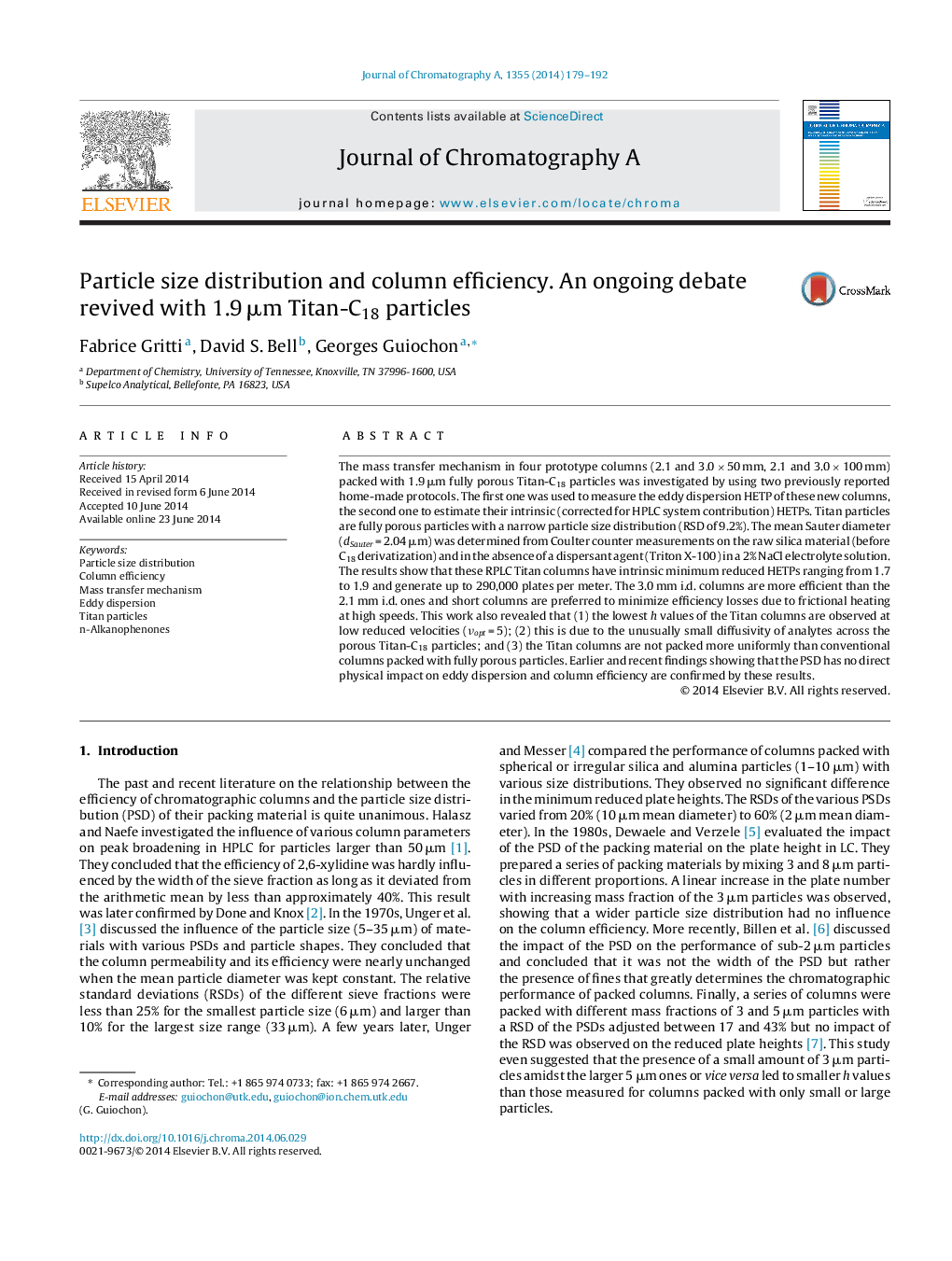| Article ID | Journal | Published Year | Pages | File Type |
|---|---|---|---|---|
| 1199794 | Journal of Chromatography A | 2014 | 14 Pages |
•The debate on the effect of the particle size distribution on column efficiency was revived.•The RSD of the particle size distribution of 1.9 μm Titan fully porous particles is only 10%.•The minimum reduced HETP of 2.1 and 3.1 mm i.d. columns packed with these particles is 1.7–1.9.
The mass transfer mechanism in four prototype columns (2.1 and 3.0 × 50 mm, 2.1 and 3.0 × 100 mm) packed with 1.9 μm fully porous Titan-C18 particles was investigated by using two previously reported home-made protocols. The first one was used to measure the eddy dispersion HETP of these new columns, the second one to estimate their intrinsic (corrected for HPLC system contribution) HETPs. Titan particles are fully porous particles with a narrow particle size distribution (RSD of 9.2%). The mean Sauter diameter (dSauter = 2.04 μm) was determined from Coulter counter measurements on the raw silica material (before C18 derivatization) and in the absence of a dispersant agent (Triton X-100) in a 2% NaCl electrolyte solution. The results show that these RPLC Titan columns have intrinsic minimum reduced HETPs ranging from 1.7 to 1.9 and generate up to 290,000 plates per meter. The 3.0 mm i.d. columns are more efficient than the 2.1 mm i.d. ones and short columns are preferred to minimize efficiency losses due to frictional heating at high speeds. This work also revealed that (1) the lowest h values of the Titan columns are observed at low reduced velocities (νopt = 5); (2) this is due to the unusually small diffusivity of analytes across the porous Titan-C18 particles; and (3) the Titan columns are not packed more uniformly than conventional columns packed with fully porous particles. Earlier and recent findings showing that the PSD has no direct physical impact on eddy dispersion and column efficiency are confirmed by these results.
